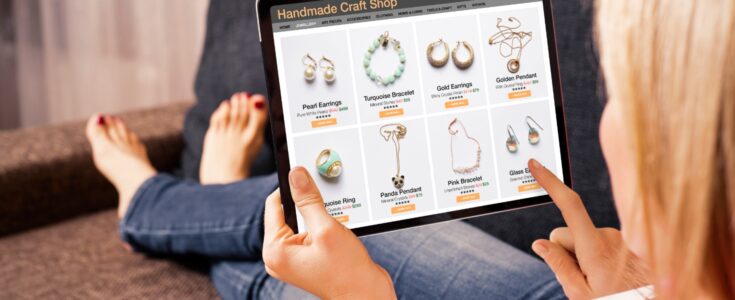
Strategies for Driving B2B Customer Experience (CX) To Boost Revenue

Recently we notice everyone talking about customer experience (CX) – yet much of this focus has been on the B2C sector. Regrettably, the same kind of popularity is missing in business-to-business (B2B) firms. As a result, customer experience performance still lags in the B2B industries and can often strive for attention against the myriad of other corporate priorities. This blog examines the drivers of B2B customer experience success based on a detailed analysis and research done across top brands in the industry.
An enriched customer experience is closely associated with improved sales as well as additional benefits. In essence, everything that a B2B business requires can be achieved through this one target.
McKinsey & Company foretells that advances in customer experience can lead to a 10% to 15% decrease in customer churn, 20% to 40% improvement in win rates of offers, and 50% lower costs to serve.
Furthermore, a 2020 report by Adobe determines that companies (both B2B and B2C) leading in customer experience are three times more prone to have significantly surpassed their 2019 business goals. But, according to McKinsey & Company, B2C companies’ average customer experience scores fall between 65% and 85%.
Interestingly, B2B firms average less than 50%.
So, what do B2B customers want?
Before learning how to optimize your B2B customer experience, it is necessary first to understand your buyers’ demands and expectations. By learning them, your focus can be shifted to what your customers need.
B2B consumers are becoming increasingly more challenging. They are seasoned buyers who are habitual to a smooth customer experience and expectation fulfilment. So, let’s immediately review who your professional customer is and what is their top priority:
- There are 3 KPIs (key performance indicators) with every buyer – increase the efficiency of the purchase process, cost savings and internal client satisfaction.
- The first generation who grew with mobile phones and the internet — “Millenials” account for 73% of all B2B purchasing decisions.
- B2B buyers buy 75% of stocks online, and 47% of buyers browse online to look for information during the B2B purchasing process.
- Out of four buyers anticipates that automation will transform the B2B buying role in the subsequent five years.
This gives you an idea to funnel down on the target audience your business must capture through CX to stay in the game.
Get a free CX Audit for your website now –
Customer journey mapping
Customer-centricity is significant to any business. However, B2B customer journeys are more complicated, require profound knowledge and accurate mapping for an organization to strategize customer experience.
For instance, let’s take an elevator company catering to large residential societies and office buildings. For this industry, contracts are negotiated with the buildings’ facility management partners. As a result, the manufacturer understands the requirements and demands of this target audience very well.
But, it is necessary to consider that the buildings’ president of the housing owners association or facility heads are also reliable influencers for purchasing decisions. Also, the actual users of these elevators are the residents of the society or working professionals in these buildings, whose criticisms also land at the facility managers’ desk.
In this case, even though only the facility management team seems to be the manufacturer’s buyer, other influencers and their knowledge about the brand is equally important. Therefore, B2B companies need robust account management and feedback mechanisms to segment their customers and get customer experience updates from various stakeholders involved in decision dynamics.
Also read: 5 Methods Of Using Analytics To Improve Customer Experience And Drive ECommerce
Leverage Voice of Customer data
Voice of customer data is an investigation plan that helps you determine what your consumers think of your Company, stock, service or commodity. With the help of VoC data, you can not only understand but also improve your customer experience.
As per a 2018 CSO Insights, Customer Experience Study says 52% of leading organizations that bolster high customer satisfaction ratings – make use of VOC data and have a programme in place for this strategy.
Voice of Customer is essentially structured survey feedback and customer opinion of a brand or a product or service. It is a critical tool in revealing customer expectations and concerns while giving your customer analytics a strategic direction to prioritize tasks that matter the most to your prospects.
Also read: 10 Easy Tips To Double The Conversion Rate Of Your Online Store
Transparency and Omnichannel
Transparency in communication across the customer journey is key to guaranteeing a seamless customer experience. In B2B deals, more than the pre-sales communications, post-sales updates are crucial. For example, constantly updating customers about a delivery, keeping track of errors or concerns, and consistent product performance reporting is vital to maintaining a healthy relationship with the clients.
This means that a B2B organization should provide comprehensive support to the customers, ensuring regular customer engagement through feedback cycles, and, above all, set achievable and honest expectations.
Also, in times when presence across platforms is a must, omnichannel customer experience is equally necessary for B2B companies, just as much as for B2C. Many successful B2B organizations now leverage social media interactions for showcasing customer value and trust.
In extension to having a solid presence across channels and social media platforms, B2B brands should also deploy strong content strategies across niche platforms or publishers to attract, engage and retain their potential audiences.
Customer feedback never gets old – when done right.
Customers can be your best critics. Their feedback should be taken seriously as they experience your products or services first-hand. For a long time now, it’s evident that customer feedback, when applied right, has helped businesses enhance themselves and stay relevant in developing times.
In B2B, you have a closer relationship with each client, depending upon your business’s nature. Leverage this relationship to seek a candid response from them through regular face-to-face discussions, apart from the usual survey mechanisms or passive data capturing.
There are other automated ways that a B2B business can deploy to gather feedback for improvement. Some of the examples include:
- Email campaign for NPS (net promoter score)
- Online chat functions
- Exit polls when someone leaves your web store
- Online surveys
- Thank-you page surveys
In addition to these, relationships and personal interactions with the client for quality feedback in B2B cannot be missed upon.
Benchmarking your Business with competitors
Benchmarking enables you to assess your performance and shows your position against the competition. The good part is that you can measure your customer experience efforts internally and externally.
For internal benchmarking, companies assess the same metrics over time to trace performance fluctuations. In contrast, for external benchmarks, businesses collect data related to their rival companies or peers.
For suitable external measures, it is always better to rely on intra-country comparisons than cross-country metrics. This applies even for assessing the same business units, as the customer journey may vary as per the country or region. It is also why ensuring that the respondent samples are similar in a benchmarking exercise is absolutely critical.
An illustration of a company that does B2B business best, and is a benchmark for many, is Amazon. A 2018 survey revealed that 33% of the B2B buyers begin their purchasing journey with Amazon Business or Google. And another 32% who start with any supplier’s website or portal often end their search with Amazon.
The reasons are pretty simple – Amazon is familiar, easy to navigate, reliable for making a purchase and has great post-sales service. This is why it has overcome all competition when it comes to delivering a tremendous multichannel B2B e-commerce experience.
Conclusion
It is time for your firm to be a front runner in creating an environment where the experience satisfies your customers. Step into the evolving customer experience era and achieve a higher market share by understanding the steps above, acquiring one client at a time!
Not sure about how to do it? As an expert in B2B commerce and experience solutions business, we craft customized strategies for your firm that ensure a more remarkable customer experience.
Contact us now to learn more.




